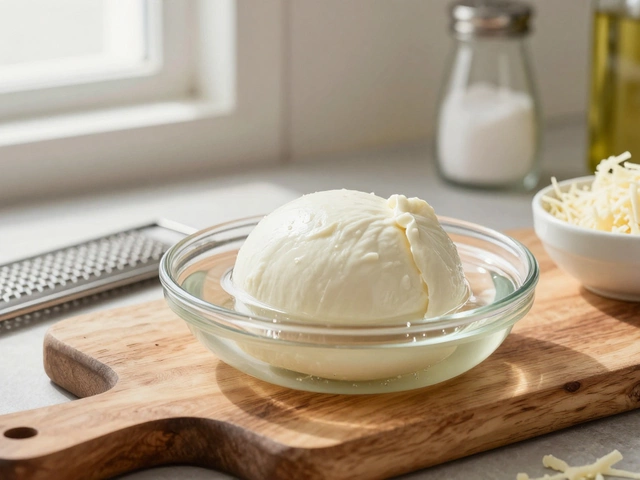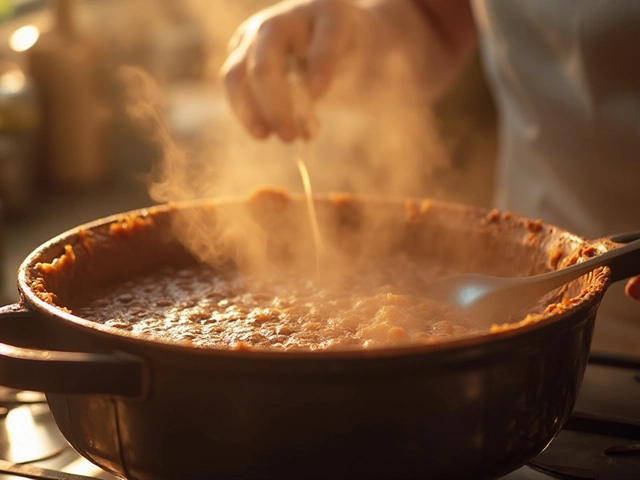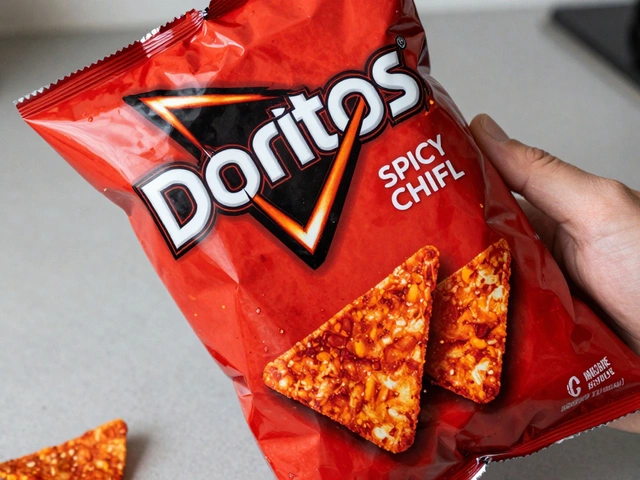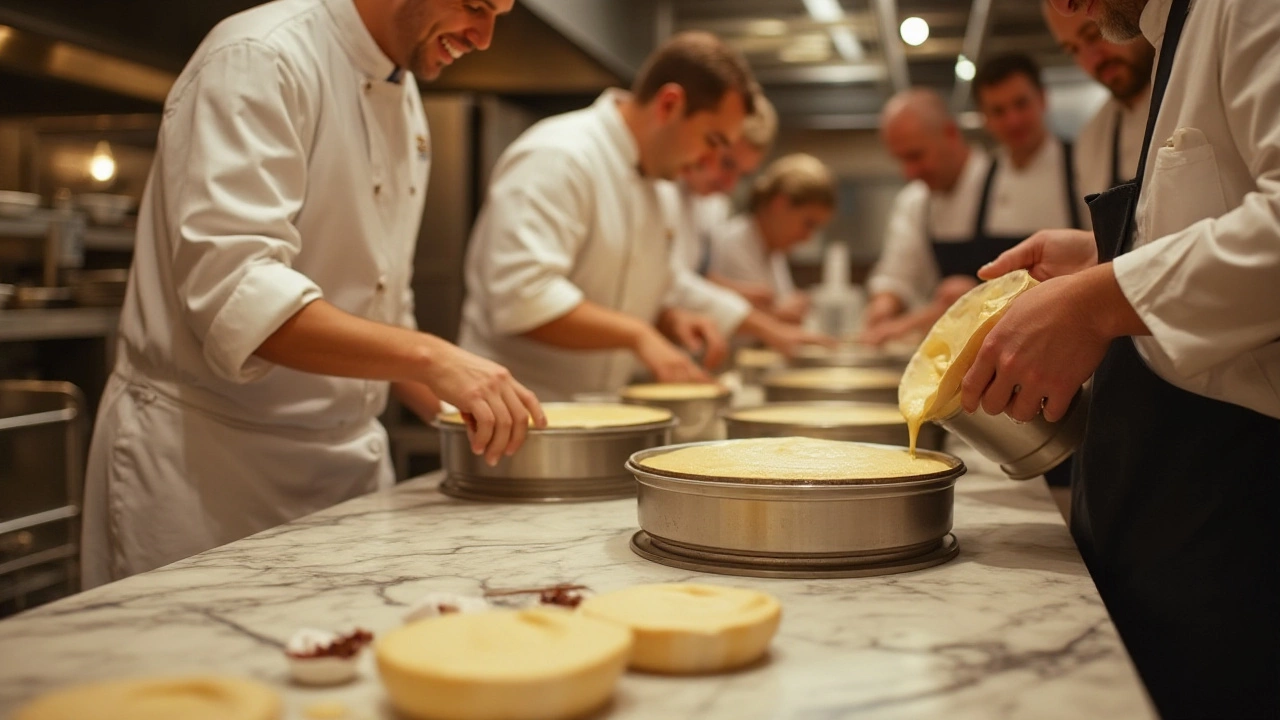
Cheesecake Factory cheesecakes have become somewhat of a legend in the dessert world, but have you ever wondered what actually goes on behind the scenes? Is there a special technique involved, or is it a straightforward process of simply baking them to perfection?
For fans of these indulgences, it's not just about tasting them—it's about unraveling the story of how each slice reaches that harmonious balance of creaminess and flavor. While some may think cheesecakes are always baked, it isn’t always the case.
Let's journey through the methods and secrets of cheesecake creation, diving into the process and ingredients that lead to their melt-in-your-mouth texture. And if you're inspired to whip up one yourself, you'll find practical tips that can transform your kitchen into a cheesecake haven.
- The Mystery of Cheesecake Factory Cheesecakes
- Baking Techniques and Methods
- The Secret Ingredients for Creaminess
- Tips for Homemade Cheesecake Success
The Mystery of Cheesecake Factory Cheesecakes
Cheesecake Factory desserts have long been the stuff of legend, captivating taste buds and inspiring infinite discussions. But behind the creamy allure and decadent flavors lies a question that gnaws at many a curious dessert lover: do Cheesecake Factory professionals actually bake their famous cheesecakes? It's a mystery wrapped in layers of cream cheese, sugar, and curiosity.
Though the details of their proprietary recipes are closely guarded secrets, some known facts can help unravel the mystery. Most of the cheesecakes begin with a base of traditional ingredients, which are then transformed through meticulous preparation. The cheesecake baking process contributes significantly to the texture and flavor of these desserts, suggesting that baking is indeed a key step. Yet some speculate about different preparation techniques, perhaps to enhance the rich nature of each slice.
"Every slice of cheesecake has its unique story – a tale of flavors crafted by harmonizing the finest ingredients," a notable dessert connoisseur once affirmed.Many who have attempted to replicate the coveted texture at home soon find the process is no walk in the park. The dessert secrets aren't limited to baking alone; it's about mastering both technique and ingredients. The use of premium cream cheese, fresh eggs, and pure vanilla extracts, combined with the perfect baking time and temperature, is essential. The oven and even the springform pan play pivotal roles in crafting their cheesecakes' distinctive silkiness and taste.
For those brave enough to try, a good tip is to bake cheesecakes in a water bath or bain-marie. This approach ensures even cooking and prevents cracking, which can often occur if the cake is exposed to direct, dry oven heat. Cheesecake Factory also pairs creativity with tradition; they wisely blend modern flavors alongside classic components.
Some enthusiasts propose that certain cheesecakes—like no-bake ones—might sidestep the oven altogether. These varieties rely on chilling rather than baking and yield a uniquely smooth experience savored by many fans. However, the perfectly balanced taste so characteristic of Cheesecake Factory's cheesecakes often points back to a balance of techniques, where both baking and chilling have important roles.

Baking Techniques and Methods
When it comes to creating a memorable cheesecake, understanding the right baking techniques is essential. Many may assume that all cheesecakes are traditionally baked, but that's not always the case, especially with delights from the Cheesecake Factory. There are generally two main methods: traditional baking and the non-bake or gelatin set variety. The Cheesecake Factory primarily uses the baking method, which involves a slow and careful process to ensure the custard-like consistency and rich flavor remain intact. Heavy cream and cream cheese contribute to the dense texture, which can be achieved through a controlled baking process, usually in a water bath. This technique helps prevent cracking by providing even heat distribution. Keeping the oven temperature low and slow, often around 160°C, allows the ingredients to meld beautifully.
A classic cheesecake recipe starts with crafting that irresistible crust, typically made of crushed biscuits or graham crackers mixed with melted butter. This provides a crunchy contrast to the creamy filling. The mixture is pressed into the base of a springform pan and then baked lightly to form a firm foundation. The filling, often a mix of cream cheese, sugar, eggs, and vanilla, is poured onto this crust and requires a gentle bake to avoid the dreaded cracks on the surface. A tip many bakers suggest is to leave the cheesecake in the oven with the door slightly open to cool down gradually, which reduces the risk of collapsing due to sudden temperature changes.
Interestingly, the Cheesecake Factory boasts about its cheesecakes being baked in layers, a technique that’s quite distinct from home-baked versions. This not only adds an aesthetic dimension but promises a burst of varying textures and flavors. According to a pastry chef from a renowned bakery, "Patience is key to achieve a smooth, immaculate cheesecake."
The best cheesecakes are those that make you forget everything else with just one bite.The balance of flavors is crucial, thus, they employ both baking and chilling methods to perfect each layer. It's about achieving that ideal creamy yet firm texture that stands beautifully when sliced.
While not every home baker will have the resources of a commercial kitchen, they can mimic some of these techniques by experimenting with water baths, choosing the right ingredients, and taking time with each step. The art of cheesecake baking is about precision and patience, but the rewards come in that first velvety forkful after everything's cooled just right.
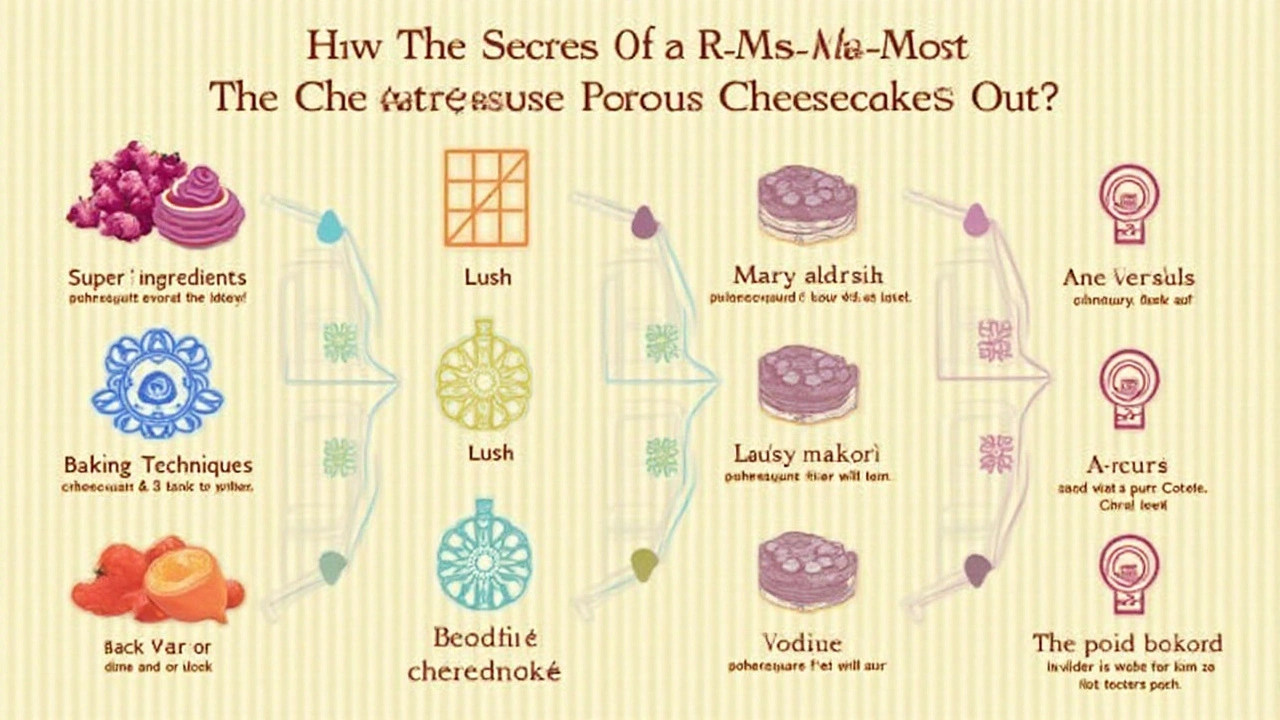
The Secret Ingredients for Creaminess
When it comes to creating a cheesecake that boasts an irresistibly smooth and creamy texture, the secret ingredients truly make all the difference. One of the standout elements in achieving this delectable creaminess lies in the selection and combination of specific dairy ingredients. Cream cheese, that's as rich as a Brighton sunset over the sea, is of course the main player, setting the foundation with its luscious texture. But it's not alone in this creamy endeavor. Heavy cream or sour cream often joins the mix, adding a layer of silkiness and depth that enhances every mouthful. These ingredients, when whipped together, allow each slice to maintain its structure, while still offering that soft, melt-in-your-mouth experience that is emblematic of a superb cheesecake.
But the role of these ingredients is not solely in their combination; the temperature and mastery in mixing them also contribute significantly to that famed creaminess. Expert bakers often advise that all dairy components should be at room temperature before they meet the mixer. This practice ensures they blend without lumps, forming a seamless batter. Mixing should be thorough, yet gentle. Overbeating the batter could lead to a dense result instead of the light, airy quality that we all adore in a fine cheesecake. The balance of these techniques is key, as too much air incorporated into the mixture can create an unsightly cracked top upon cooling—a consequence that meticulous bakers strive to avoid.
Moreover, not all creaminess comes directly from dairy. Vanilla extract, with its aromatic embrace, adds a lovely sweetness that complements the tang of the cream cheese. It's like an ethereal whisper that works behind the scenes, enhancing flavors rather than overshadowing them. Some chefs even experiment with a touch of lemon zest or juice for a gentle lift, which can cut through the richness and provide a delightful juxtaposition that refreshes the palate.
“A cheesecake doesn't require a complicated recipe; it needs quality ingredients, handled with care. That's where the magic lies,” says renowned pastry chef Heston Blumenthal, capturing the essence of this dessert's allure.
One might not think that a pinch of salt would have its place among sweet ingredients, but its inclusion is surprisingly vital. Salt acts as a flavor enhancer, highlighting the sweetness and rounding out the flavors. Just a small amount can elevate the taste from ordinary to exquisite. When mixing your cheesecake, try to use unsalted butter for the crust to better control the saltiness of the final outcome. Also, add the salt at the same time as the vanilla extract, allowing for an even distribution throughout the batter.
Achieving the perfect creamy cheesecake doesn't just rest on individual ingredients or careful technique alone—it is a dance of these elements, each playing its role in concert to produce a dessert that's as delightful to the taste buds as a melody is to ears. When harnessed correctly, these secret ingredients and techniques can transform a simple cheesecake into the legendary creations akin to those from the Cheesecake Factory. A true testament to how a few carefully chosen elements can result in a culinary masterpiece that leaves a lasting impression.
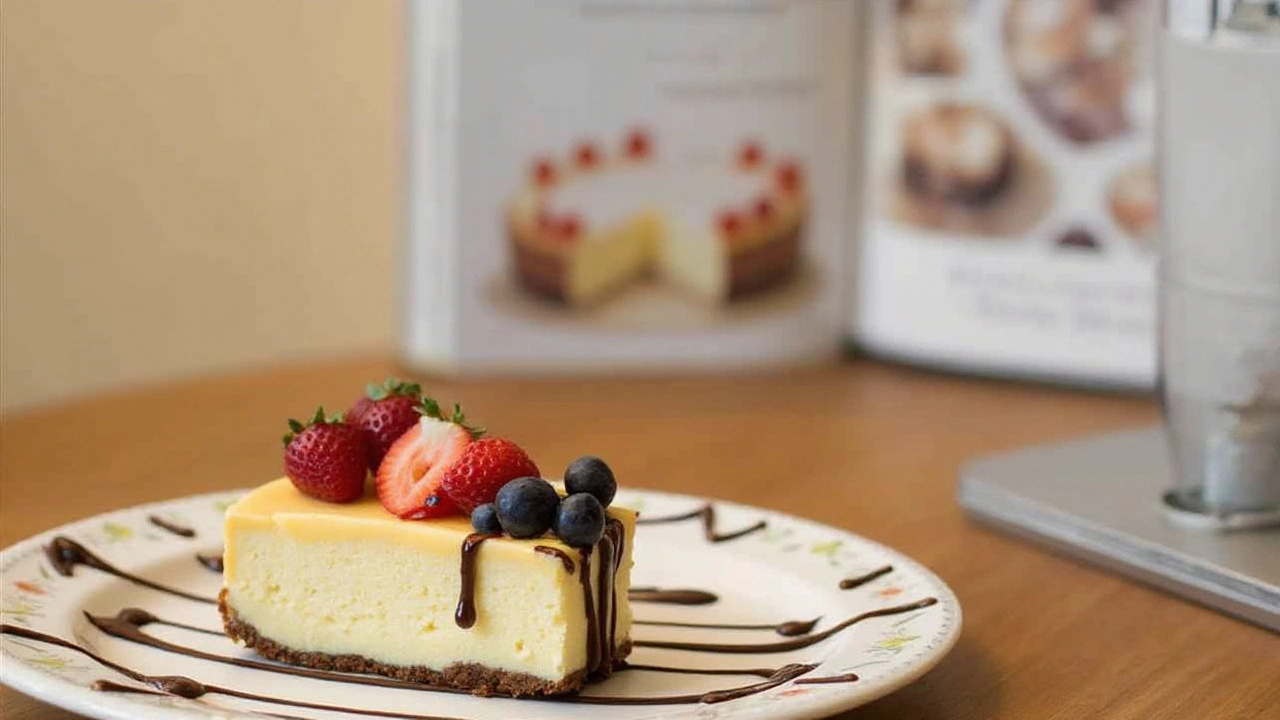
Tips for Homemade Cheesecake Success
Baking a cheesecake that rivals those from the Cheesecake Factory is no small feat, but with the right blend of patience, technique, and a sprinkle of creativity, you can achieve a creamy, indulgent masterpiece right in your home kitchen. First, ensure you have quality ingredients, as they deeply affect the texture and taste of your final dessert. Fresh cream cheese is essential—opt for full fat to achieve that luxurious, velvety texture. Also, don't skimp on the vanilla; pure extract offers a deeper, more nuanced flavor than its artificial counterpart.
Preparation is key in the cheesecake-making process. Start with the crust, as it provides a solid base for the entire cake. The classic choice is a graham cracker crust, but feel free to experiment with digestive biscuits or even crushed cookies for a twist. Mix in a little sugar and melted butter, then press the mixture firmly into the base of your springform pan. Chill it in the refrigerator while you prepare the filling. This step is crucial to avoid a soggy base.
Measure your ingredients precisely. Baking is as much a science as it is an art. For a smooth batter, your ingredients should generally be at room temperature. This way, they incorporate more fully, avoiding lumps in the cream cheese. When blending, take it slow. Overmixing introduces too much air into the batter, causing cracks as it bakes. An expert tip: tap the filled pan on the counter a few times to release trapped air bubbles before baking.
Cooking method can significantly influence your cheesecake's texture. Unlike traditional cakes, cheesecake benefits from a slow, gentle bake. Many bakers recommend a water bath—placing the cheesecake pan in a larger pan filled halfway with hot water. This water bath method ensures a consistent temperature, helping to prevent cracks and maintain moisture for a soft texture. Keep an eye on the time and temperature carefully; when done, the cheesecake should jiggle slightly in the center like a firm custard. "Consistency is the last refuge of the unimaginative," Oscar Wilde might say, but not when it comes to cheesecakes.
The final step—cooling and resting—is often overlooked but is vital for flavor development and texture perfection. Resist the urge to slice into your cheesecake right away. Allow it to cool gradually in the oven with the door slightly ajar, then chill it in the fridge for at least four hours, though overnight is preferable. The chilling helps the flavors meld and the texture to firm up to that perfect bite. Serve your masterpiece with a flourish, perhaps with fresh berries or a drizzle of salted caramel.

